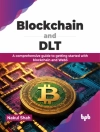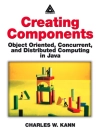W.J.Quirk 1.1 Real-time software and the real world Real-time software and the real world are inseparably related. Real time cannot be turned back and the real world will not always forget its history. The consequences of previous influences may last for a long time and the undesired effects may range from being inconvenient to disastrous in both economic and human terms. As a result, there is much pressure to develop and apply techniques to improve the reliability of real-time software so that the frequency and consequences of failure are reduced to a level that is as low as reasonably achievable. This report is about such techniques. After a detailed description of the software life cycle, a chapter is devoted to each of the four principle categories of technique available at present. These cover all stages of the software development process and each chapter identifies relevant techniques, the stages to which they are applicable and their effectiveness in improving real-time software reliability. 1.2 The characteristics of real-time software As well as the enhanced reliability requirement discussed above, real-time software has a number of other distinguishing characteristics. First, the sequencing and timing of inputs are determined by the real world and not by the programmer. Thus the program needs to be prepared for the unexpected and the demands made on the system may be conflicting. Second, the demands on the system may occur in parallel rather than in sequence.
William J. Quirk
Verification and Validation of Real-Time Software [PDF ebook]
Verification and Validation of Real-Time Software [PDF ebook]
Acquista questo ebook e ricevine 1 in più GRATIS!
Lingua Inglese ● Formato PDF ● ISBN 9783642702242 ● Editore William J. Quirk ● Casa editrice Springer Berlin Heidelberg ● Pubblicato 2012 ● Scaricabile 3 volte ● Moneta EUR ● ID 6330825 ● Protezione dalla copia Adobe DRM
Richiede un lettore di ebook compatibile con DRM












